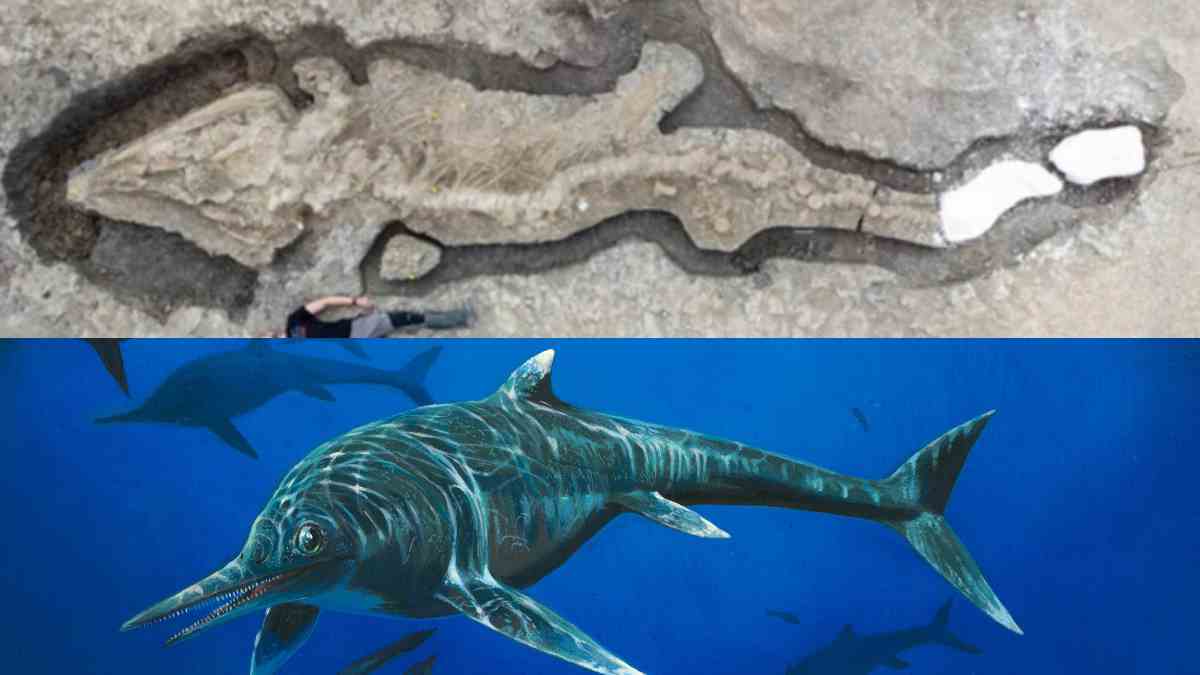Regional

Digital Desk: A giant fossil of 'sea dragon' has been extracted out of the mud in the United Kingdom. A wetland conservationist discovered this rare sea dragon during his working hours.
Currently, this rare fossil of the sea dragon has been termed the largest fossil ever found in Britain.
Researchers identified this fossil as an ichthyosaur, an old marine reptile that paddled in Earth's prehistoric seas when dinosaurs were present on Earth. Scientists state the ancient sample is nearly complete from tip to tail.
"Our sample, the Rutland Ichthyosaur or the Rutland Sea Dragon, is the biggest all-out ichthyosaur ever discovered in Britain in over 200 years of gathering these things scientifically," stated paleontologist Dean Lomax who directed the excavation.
A conversationist, Joe Davis, along with Leicestershire and Rutland Wildlife Trust, initially spied an exposed jawbone of the rare fossil of sea dragon in February last year.
The fossilized remains of the 'sea dragon' were unearthed over three weeks in a sheer process, applying a quantity of plaster and wooden splints utilized to cover the huge yet fragile sample as it was removed from mud.
Also Read: Lata Mangeshkar update: Legendary singer recovering well, family not allowed to meet
The team of conservationists, paleontologists, and volunteers could successfully unearth the 10-meter-long fossil and its complete backbone consisting of more than 150 individual vertebrae.
"I understand lots of individuals have spent their lives examining for something like this. I've been very fortunate to come across it," Davis informed New Scientist regarding the discovery.
Initially, Davis was out looked by his associates stating that it was simply a piece of pipe.
As per information, Ichthyosaurs range from 1 meter (3.3 feet) to more than 25 meters (85 feet). It corresponds to today's dolphins, which first emerged approximately 250 million years ago and died out nearly 160 million years after that.
However, uncovering the entire giant 'sea dragon' from the mud was difficult for the teams working on it. "It's not usually you are liable for safely lifting a very significant but very delicate fossil weighing that much," said Larkin, an expert paleontological conservator.
The stunning specimen was later demonstrated to the masses, is still covered in its plaster model, kept in a secret place, and has not yet been examined in detail.
The researchers have been planning to study the specimen in-depth after being preserved and cleaned up completely. They plan to write papers on its discovery once the remaining process associated with the 'sea dragon' specimen is completed.
Leave A Comment